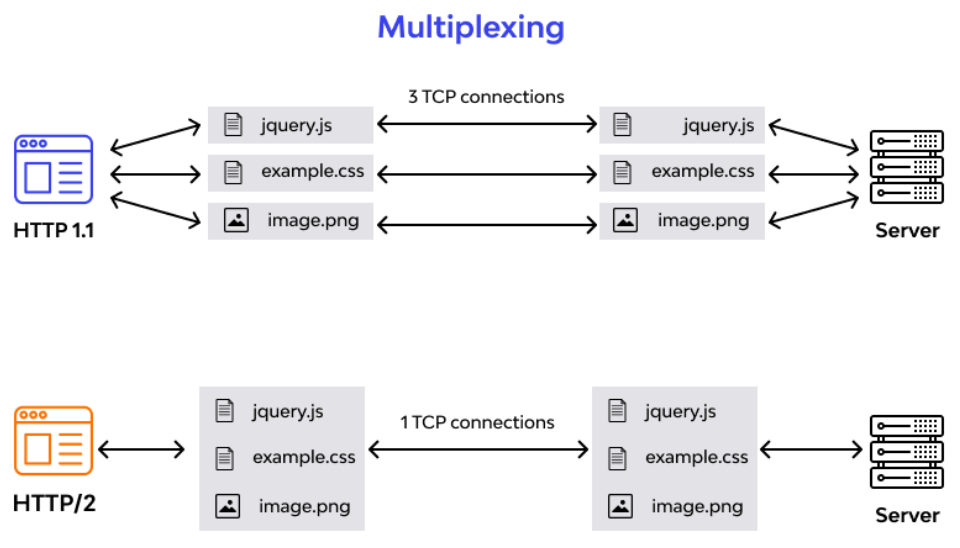
HTTP1 Vs HTTP2
The main difference between HTTP/1 and HTTP/2 is that the latter is a newer, more efficient version of the protocol used for communication between a client and a server on the World Wide Web. While HTTP/1 has been the dominant protocol for many years, HTTP/2 was designed to address some of the limitations of HTTP/1 and improve the speed and performance of web applications.
One of the main differences between HTTP/1 and HTTP/2 is the way data is transmitted between the client and the server. In HTTP/1, data is sent in separate requests and responses, with each request requiring a new connection to the server. This can be inefficient and slow, particularly when a client needs to download multiple resources from a server.
HTTP/2, on the other hand, uses a single, multiplexed connection to transmit data between the client and the server. This allows multiple requests and responses to be sent over the same connection simultaneously, improving the speed and efficiency of the transfer.
Another difference between HTTP/1 and HTTP/2 is the way data is formatted. In HTTP/1, data is sent as plain text, which can be difficult for machines to process. HTTP/2, on the other hand, uses a binary format for data, which is more efficient and easier for machines to interpret.
Additionally, HTTP/2 introduces new features such as server push, which allows the server to proactively send data to the client without waiting for a request, and header compression, which reduces the size of the data being transmitted. These features can further improve the performance of web applications.
Here you can have a live demo showing the loading time differences:
In conclusion, HTTP/2 is a significant improvement over HTTP/1, offering faster and more efficient communication between clients and servers on the web. While HTTP/1 is still widely used, more and more websites are adopting HTTP/2 to take advantage of its performance benefits.
